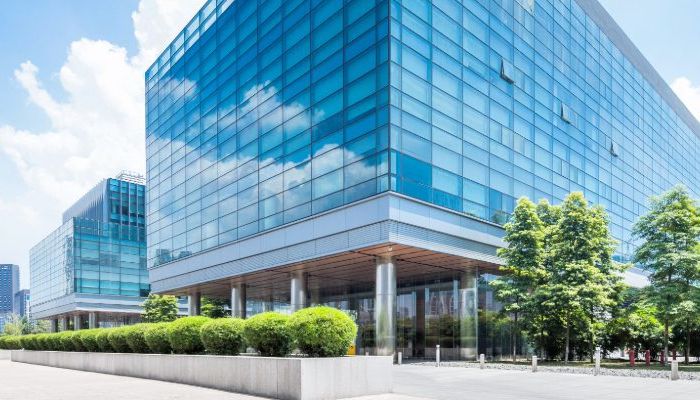A company that grows rapidly will soon run out of usable office space, yet it can still have empty desk spaces on most days. It happens from business travel, vacations, sickness, and remote or flexible working.
So, why should you continue paying for underused spaces that do not add to your bottom line? Or how can you ensure you optimize the usage of your existing office space to increase productivity?
Modern organizations respond to these questions with hot desking productivity. Creating the perfect office for your workplace that meets the “new normal” of remote and flexible work requires business leaders to look at several workplace trends.
Ideally, there is no guarantee of success regarding the type of work environment you create. The success of each model, including hot desking, depends on how well you implement it.
In this blog post, we dive deeper into what hot desking productivity means to modern businesses and how shared spaces evolve with the return to the office. Stick to the end to identify the solutions you need to create a better workplace experience for your employees. Let’s get started!
Flexible Work Arrangements with Hot Desking
Workplace trends have evolved to the now remote and hybrid experiences. Hot desking is a form of free addressing where employees no longer have to be assigned to a specific desk in the office. The employees have control over the desks they choose daily. They can check the availability of desks seamlessly using desk booking software.
Other companies provide options to check various types of bookable desks and dedicated desks. This workplace seating arrangement is increasing in popularity, with over 19% of US employees not having assigned desks. The trend stems from the lessons learned during the pandemic and the growing awareness of improving productivity and efficiency of hot desking.
The Difference between Hot Desking and Open Plan Offices
While it is common to use hot desking for open office spaces, the two are not synonymous. The open plan offices are the most popular workplace environment that removes cubicles and private spaces for a wide-open working space.
With hot desking, the benefits and productivity of open spaces come down to how the company implements the strategy. It includes the willingness to adapt to the trends and make the necessary changes to boost employee productivity.
Do Hot Desking Systems Improve Workplace Productivity?
Although no conclusive research exists on hot desking productivity, organizations that have already implemented the strategy have gained positive results. Companies should be careful to implement it to ensure they don’t interrupt their regular workplace setting. Some of the top benefits of hot desking include:
Collaboration
Traditional work involved employees working together with other team members performing similar jobs. Remote jobs reduced such collaboration as each employee worked from other unique places. Hot desking can improve collaboration amidst remote and hybrid work environments.
With hot desking, employees can interact with different people enabling them to make better decisions and work together in a productive environment. Remote workers now have the chance to interact with others in a controlled environment to maximize their productivity.
Cost Savings
Hot desking saves your organization money by offering a flexible working environment that encourages several employees to work at the same desk. The company will save the money required for creating individual employee spaces with dedicated desks.
Reduce Burnout
Employee burnout is expected in modern employees. Tasks can easily pile up, leading to employees shutting down completely. Hot desking reduces the risk of burnout by exposing employees to a thriving and productive workplace.
Implementing a Successful Hot Desking Environment
The best hot desking solution should start at the top, followed by clear communication, policy, and guidance. Over 87% of companies introduce regulations at this point to improve hot desk etiquette, such as not switching desks or eating during work hours.
Here are the best practices to implement hot desking in your workplace:
Make It Easy
You can get the most success after implementing hot desking if it is easy for employees to check in to their desks. Making a change, especially in the workplace, is hard, and employees will feel scared to give up their fixed desks. They may think that finding a desk daily can be difficult and take a long time to search.
Luckily, technology solutions like room scheduling can help to make desks accessible via desktop or mobile. The employees simply need to log in and book their desks from home.
Focus On Your Employee Experience
Employee experience should be the major focus for implementing a new workplace strategy. The best way to do this is to solicit employee feedback about the solution before the implementation. Find how employees feel about the hot desking solution and use the data collected to make the right choice for your team.
Offer Visibility
Visibility in hot desking is critical for employees who have not yet experienced working in a flexible open workspace. Apart from the spaces they can choose, it also makes it easy to find colleagues who will be moving in and out of the office daily. Employ a solution that offers a real-time floor plan to keep employees connected with the people and resources they need.
Should You Implement Hot Desking Solution?
Whether you should or should not implement a hot desking in your workplace is a personal preference. Consider your employees and company’s needs and how the solution will impact productivity. Companies that already employ and enjoy collaboration strategies in the workplace can use this as an excellent opportunity to reduce costs without sacrificing remote work.
However, managing desk bookings is the biggest challenge to implementing a hot desking solution. This can be even more complicated for larger offices where staff has to search for a free desk.
FM:Systems make this process seamless. Our desk booking software allows employees to book desks via mobile devices or in person. Employees can schedule booking ahead of time to avoid last-minute anxiety and risk missing a space or check a desk on the spot according to their unique needs.
Additionally, the FM:Systems removes the guesswork out of space management to deliver objective data and workplace intelligence to make data-driven decisions about your office space and real estate strategy. Companies can use it to enable high-performance facilities and highly productive employees.
Schedule a demo today to learn more about how we can help with improving your desk-sharing strategy.










